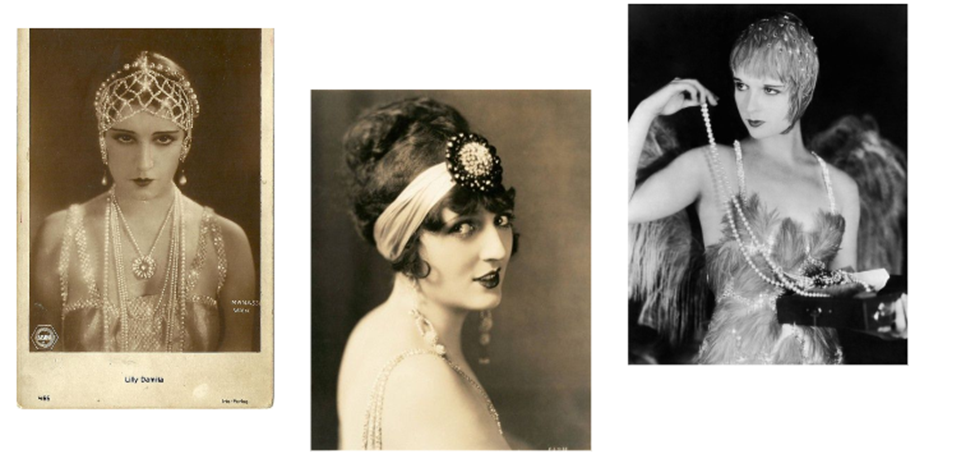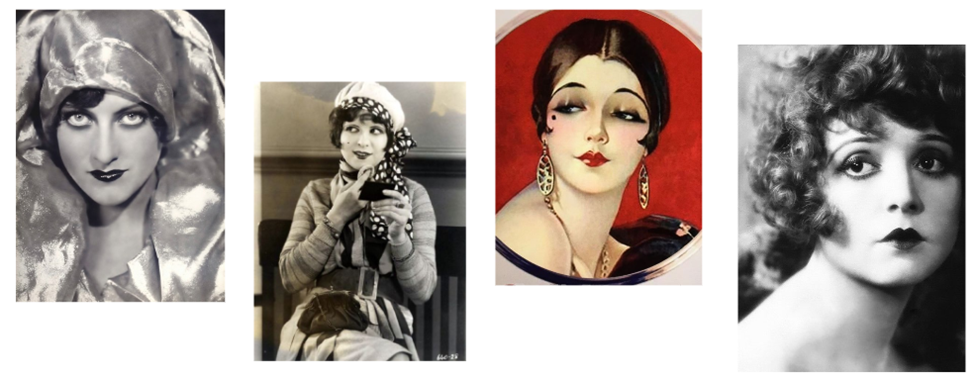Flapper, Who?!
The iconic flapper girls of the 1920s revolutionized fashion with their bold, unconventional style, which served as a symbol of newfound female independence and societal change. Flappers engaged in activities deemed unladylike at the time. They attended social events without chaperones, smoked and drank in public, and did a lot more not-so school appropriate things! Flappers embraced a distinctive style that revolutionized women’s fashion, reflecting their liberated lifestyles. Central to this iconic look were key elements such as the bob haircut, knee-length dresses, cloche hats, and an array of daring accessories. Each piece of a flapper’s outfit was not just a fashion statement but also a cultural declaration, highlighting the dynamic interplay between societal change and personal expression during the Roaring Twenties. This article explores the various parts of a flapper’s ensemble, revealing how each element contributed to the era’s vibrant and rebellious fashion.
Dresses!
One of the most significant aspects of the flapper girls’ outfits were the dresses— the centerpiece of the outfit, scandalous and unconventional.

The flappers donned short, sleeveless, dresses that fell just above the knee and gave women a more androgynous look (referred to as “la garçonne” at the time), the complete opposite of the Edwardian era dresses that accentuated the feminine figure. The dresses were notorious for their outrageous low cut, going against everything the Victorian morals forced upon young women of the time.
“You must like the Charleston Mr. Greco. It wears out shoes!”
The flappers donned short, sleeveless, dresses that fell just above the knee and gave women a more androgynous look (referred to as “la garçonne” at the time), the complete opposite of the Edwardian era dresses that accentuated the feminine figure. The dresses were notorious for their outrageous low cut, going against everything the Victorian morals forced upon young women of the time. Contrary to common belief, the flapper girls didn’t always wear glittery black dresses with fringes, these dresses were more commonly worn by dancers and only rarely did regular flappers wear them. The fringe dresses were popular for a time but over time their tastes changed. The dresses the flappers usually wore had a simpler design, elegant and classy dresses that allowed freedom of movement to walk around the city, drive cars, and do the Charleston. The flashy dresses were more commonly worn in the evenings when flapper girls went to speakeasies to dance the night away. Designers like Coco Chanel, Elsa Schiaparelli and Jean Patou designed many of the evening dresses the flappers wore in the 1920’s. Despite the various styles that were worn, one thing stayed the same— the flapper girls’ dresses stayed revealing and bold, helping them be the one thing the Victorian morals hated the most, confident women.

Marion Morehouse models a beautiful sequined crepe romaine little black dress in 1926 by Coco Chanel. Photo by Edward Steichen
Shoes!
In 1920, the shoes were finally out of the shadows! Previously covered up by the long garments of older decades, shoes finally had their time to shine when the flappers decided to make shorter dresses a part of their daily wear. Footwear became more decorated since it could be seen now and was matched to the style of the garment and the season. The most popular shoe of the 1920’s was the pump, a shoe with a modest 2-inch heel.
Day shoes were typically black, brown, grey, or beige, often combining two types of leather for unique patterns. On the other hand, evening shoes had high sheen heels, and straps became thinner and more adorned with pretty stones or sequins as the decade progressed.

The Parisian shoe from Sears. Fall of 1929, p, 66. These are actually 2-inch heels.
They featured decorative buckles and buttons, often with diamante, onyx, bronze, or pearl, making plain shoes more affordable with decorative covers. In the 1920’s the “Mary Jane” pump, with a single strap across the vamp, was the
most popular shoe, worn by everyone from fashionable flappers to maids, who needed soft soles for quiet movement.
Hair!
The flappers aimed for a boyish look with their clothing, so they wanted to emulate that effect with their hair as well. As a result, the Bob was born. Bobs were short hairstyles that were cut straight around jaw level and were worn by a few women in the 1910s, including Coco Chanel, Irene Castle, and Polaire. In contrast to the long, pinned-up or braided styles that had been popular for centuries, bobbed hair initially represented a bold statement of feminism and individuality. The style became widely popular in the 1920s thanks to film stars like Gloria Swanson, Clara Bow, and Louise Brooks.


Clara Bow Josephine Baker
Accessories!
Higher hem lines lead to the increased popularity of hosiery. Artificial silk was the most common fabric for stockings by 1924, but for evenings women sought after silk stockings. Most “respectable” women would use garter belts to keep their stocking tops out of sight beneath their dresses, but the mischievous flapper on the other hand would roll them down to just above the knee and hold them there with knee garters. Some hosiery brands like Holeproof Hosiery would even use the flapper look in their ads. The flappers also loved their jewelry—from bracelets, necklaces, and headpieces, to powder compacts and cigarette cases—they could not get enough of it. The jewelry followed an Art Deco style and was hugely influenced by the Style Moderne theme of the Paris exposition in 1925. Boas were also extremely popular however, as they were worn so often, people saw them as “basic”.

Make-up!
In the decades before the Roaring Twenties, “respectable” women did not wear makeup. However, that changed when flappers began applying cosmetics that were meant to be noticed, a huge contrast to the subdued and feminine pre-war Victorian attitudes and styles typified by the classic Gibson girl. Plus, makeup was a lot harder to use before the 1920’s. Luckily, the new inventions of the Roaring Twenties allowed women to start experimenting with their appearance. Rouge started coming in compact cases and became more socially acceptable to use, with women usually wearing red or even orange rouge in circles on their cheeks. Lipstick was made easier to use with the metal retractable containers created in 1915. The most popular look (thanks to Clara Bow) was the heart shaped cupid’s bow. On the upper lip, red lipstick would rise above the lip line in the shape of a cupid’s bow and on the lower lip, it was applied in an exaggerated manner. Women would also line their eyes with dark, smudged kohl, have heavy eyeshadow and pluck their eyebrows to form a thin line, if not entirely, and then draw them back in.

That’s All!
The flapper’s outfit of the 1920s was far more than a mere collection of clothes, it was a bold declaration of independence and modernity. Each piece, from the sleek bobbed hair and cupid’s bow lips to the short dresses and striking accessories, contributed to a look that challenged and redefined traditional gender norms. The Flappers may just seem like indecent and rebellious women to most, but they were so much more. We have the flapper girls to thank for our freedom to dress how we please. If it were not for their bravery to be bold, we may have ended up still being forced to dress in uncomfortable and restrictive clothing. By examining the intricate details and of flapper fashion, we gain a deeper understanding of how these vivacious and courageous women left a permanent mark on the history of fashion and society.
Written By:
Vinni Bahl, Grade 10
Leave a comment